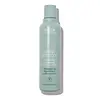What's inside
What's inside
 Key Ingredients
Key Ingredients

No key ingredients
 Benefits
Benefits

No benefits
 Concerns
Concerns

 Ingredients Side-by-side
Ingredients Side-by-side

Water
Skin ConditioningSodium Cocoyl Isethionate
CleansingSodium Chloride
MaskingPropanediol
SolventSodium Methyl Cocoyl Taurate
CleansingBabassuamidopropyl Betaine
CleansingCocamide Mipa
EmulsifyingGlycol Stearate
EmollientAndrographis Paniculata Extract
AstringentCentella Asiatica Extract
CleansingLactobacillus Ferment
Skin ConditioningHelianthus Annuus Seed Oil
EmollientZinc PCA
HumectantGlycerin
HumectantEthyl Macadamiate
Skin ConditioningMenthol
MaskingMenthyl Lactate
MaskingGlyceryl Caprylate
EmollientTocopherol
AntioxidantGuar Hydroxypropyltrimonium Chloride
Skin ConditioningCitric Acid
BufferingMalic Acid
BufferingParfum
MaskingLinalool
PerfumingLimonene
PerfumingGeraniol
PerfumingHydroxycitronellal
PerfumingBenzyl Salicylate
PerfumingTetrasodium Iminodisuccinate
Potassium Sorbate
PreservativePhenoxyethanol
PreservativeSodium Benzoate
MaskingWater, Sodium Cocoyl Isethionate, Sodium Chloride, Propanediol, Sodium Methyl Cocoyl Taurate, Babassuamidopropyl Betaine, Cocamide Mipa, Glycol Stearate, Andrographis Paniculata Extract, Centella Asiatica Extract, Lactobacillus Ferment, Helianthus Annuus Seed Oil, Zinc PCA, Glycerin, Ethyl Macadamiate, Menthol, Menthyl Lactate, Glyceryl Caprylate, Tocopherol, Guar Hydroxypropyltrimonium Chloride, Citric Acid, Malic Acid, Parfum, Linalool, Limonene, Geraniol, Hydroxycitronellal, Benzyl Salicylate, Tetrasodium Iminodisuccinate, Potassium Sorbate, Phenoxyethanol, Sodium Benzoate
Water
Skin ConditioningSodium Lauryl Sulfate
CleansingSodium Laureth Sulfate
CleansingSodium Chloride
MaskingGlycol Distearate
EmollientZinc Carbonate
Sodium Xylenesulfonate
Dimethicone
EmollientZinc Pyrithione
AntiseborrhoeicCocamidopropyl Betaine
CleansingParfum
MaskingSodium Benzoate
MaskingGuar Hydroxypropyltrimonium Chloride
Skin ConditioningHexyl Cinnamal
PerfumingLinalool
PerfumingMagnesium Carbonate Hydroxide
BufferingMethylchloroisothiazolinone
PreservativeMethylisothiazolinone
PreservativeCI 42090
Cosmetic ColorantCI 17200
Cosmetic ColorantWater, Sodium Lauryl Sulfate, Sodium Laureth Sulfate, Sodium Chloride, Glycol Distearate, Zinc Carbonate, Sodium Xylenesulfonate, Dimethicone, Zinc Pyrithione, Cocamidopropyl Betaine, Parfum, Sodium Benzoate, Guar Hydroxypropyltrimonium Chloride, Hexyl Cinnamal, Linalool, Magnesium Carbonate Hydroxide, Methylchloroisothiazolinone, Methylisothiazolinone, CI 42090, CI 17200
Ingredients Explained
These ingredients are found in both products.
Ingredients higher up in an ingredient list are typically present in a larger amount.
This ingredient is derived from guar gum.
It is a conditioning ingredient, meaning it helps soften skin and hair.
Linalool is a fragrance and helps add scent to products. It's derived from common plants such as cinnamon, mint, citrus, and lavender.
Like Limonene, this ingredient oxidizes when exposed to air. Oxidized linalool can cause allergies and skin sensitivity.
This ingredient has a scent that is floral, spicy tropical, and citrus-like.
Learn more about LinaloolParfum is a catch-all term for an ingredient or more that is used to give a scent to products.
Also called "fragrance", this ingredient can be a blend of hundreds of chemicals or plant oils. This means every product with "fragrance" or "parfum" in the ingredients list is a different mixture.
For instance, Habanolide is a proprietary trade name for a specific aroma chemical. When used as a fragrance ingredient in cosmetics, most aroma chemicals fall under the broad labeling category of “FRAGRANCE” or “PARFUM” according to EU and US regulations.
The term 'parfum' or 'fragrance' is not regulated in many countries. In many cases, it is up to the brand to define this term.
For instance, many brands choose to label themselves as "fragrance-free" because they are not using synthetic fragrances. However, their products may still contain ingredients such as essential oils that are considered a fragrance by INCI standards.
One example is Calendula flower extract. Calendula is an essential oil that still imparts a scent or 'fragrance'.
Depending on the blend, the ingredients in the mixture can cause allergies and sensitivities on the skin. Some ingredients that are known EU allergens include linalool and citronellol.
Parfum can also be used to mask or cover an unpleasant scent.
The bottom line is: not all fragrances/parfum/ingredients are created equally. If you are worried about fragrances, we recommend taking a closer look at an ingredient. And of course, we always recommend speaking with a professional.
Learn more about ParfumSodium Benzoate is a preservative. It's used in both cosmetic and food products to inhibit the growth of mold and bacteria. It is typically produced synthetically.
Both the US FDA and EU Health Committee have approved the use of sodium benzoate. In the US, levels of 0.1% (of the total product) are allowed.
Sodium benzoate works as a preservative by inhibiting the growth of bacteria inside of cells. It prevents the cell from fermenting a type of sugar using an enzyme called phosphofructokinase.
It is the salt of benzoic acid. Foods containing sodium benzoate include soda, salad dressings, condiments, fruit juices, wines, and snack foods.
Studies for using ascorbic acid and sodium benzoate in cosmetics are lacking, especially in skincare routines with multiple steps.
We always recommend speaking with a professional, such as a dermatologist, if you have any concerns.
Learn more about Sodium BenzoateChances are, you eat sodium chloride every day. Sodium Chloride is also known as table salt.
This ingredient has many purposes in skincare: thickener, emulsifier, and exfoliator.
You'll most likely find this ingredient in cleansers where it is used to create a gel-like texture. As an emulsifier, it also prevents ingredients from separating.
There is much debate on whether this ingredient is comedogenic. The short answer - comedogenic ratings don't tell the whole story. Learn more about comegodenic ratings here.
The concensus about this ingredient causing acne seems to be divided. Research is needed to understand if this ingredient does cause acne.
Scrubs may use salt as the primary exfoliating ingredient.
Learn more about Sodium ChlorideWater. It's the most common cosmetic ingredient of all. You'll usually see it at the top of ingredient lists, meaning that it makes up the largest part of the product.
So why is it so popular? Water most often acts as a solvent - this means that it helps dissolve other ingredients into the formulation.
You'll also recognize water as that liquid we all need to stay alive. If you see this, drink a glass of water. Stay hydrated!
Learn more about Water